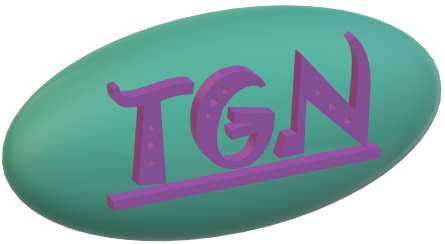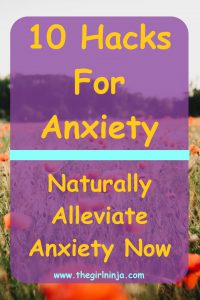
Anxiety, that overwhelming feeling that so many individuals struggle with. As I begin this post my heart rate is quickening, every possible negative outcome is rushing to the foremost part of my thoughts, causing me to freeze in action as I struggle to control a fight or flight response. Yes, writing about anxiety causes me a little anxiety.
I certainly want to get this right, this post is meant to help others through information.
For challenges like anxiety it’s only natural that we begin with understanding what anxiety is and why we have it. Then we will get into the hacks or tools you can try to reduce or control your anxiety.
You should know that the causes of anxiety can be environmental or genetic, and there is no one cause for all. The contributing factors that result in anxiety for each individual can vary. Here we will focus on the biological reaction in your body that we interpret as anxiety, or the neuroscience of anxiety.
According to Oxford, anxiety is a feeling of worry, nervousness, or unease, typically about an imminent event or something with an uncertain outcome.
Before we jump into the neuroscience of anxiety let’s first ensure we have an understanding of a couple of key neuroscience terms. First, your brain, the part of your brain that is responsible for our anxiety is our limbic system. Your limbic system is not a part of your brain like your olfactory bulb or frontal lobe. Rather, your limbic system consists of a multitude of parts of your brain that interact resulting in your emotional or lack there of emotional reaction to stimuli.
I am happy to talk more about our limbic system, but it is so vast that it needs to be another separate post. So, for now, if you are interested in better understanding our limbic system I encourage you to wikipedia “limbic system”. Here I will focus on anxiety.
Another important neuroscience term we will need to know to discuss anxiety is neurotransmitter. Neurotransmitters are chemicals in our brain that can be released by cells and bind to cells to create a chain reaction in the cell it binds to. The chain reaction started by a neurotransmitter typically results in an observable physiological response output like sweating or becoming tense.
Several neurotransmitters in our limbic system are responsible for the physical and behavioral reaction we identify as anxiety. More specifically, increased concentrations of the following neurotransmitters are correlated with reactions interpreted as anxiety; norepinephrine, serotonin, dopamine, and gamma-aminobutyric acid (GABA).
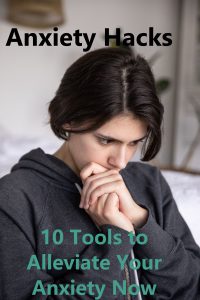
Everyone is unique, so the specific stimuli or situation that leads to an increase in norepinephrine, serotonin, dopamine, and gamma-aminobutyric acid (GABA) in your limbic system can differ from person to person. Some variations from person to person include severity of anxiety felt and mechanisms that help us reduce/eliminate the feeling of anxiety or simply put, feel better. There are medical treatments for severe anxiety that persists for a long period of time or that disrupts an individual’s ability to function day to day in life.
In this post, we are focusing on mild cases of anxiety and natural or behavioral tools we can turn to ourselves to help regulate a mild occurence of anxiety.
There are many ways to think about how anxiety arises in our brain and how to alleviate anxiety. Mostly because it is highly variable from how each individual perceives an external stimuli, which is dependent on life experiences as well as genetics. Unlike other scenarios, alleviating anxiety is not as simple as decreasing the four neurotransmitters in our limbic system at the root cause for our anxiety, in the moment.
For the purpose of understanding how we will try to alleviate our anxiety let’s think about it as refocusing our brain. When our brain is focused on a stimuli that induces a feeling of anxiety, our brain and ourselves have trouble thinking about anything else. For considering tools or go to actions to alleviate mild anxiety let’s focus on how to refocus your conscious energy on something calming or positive.
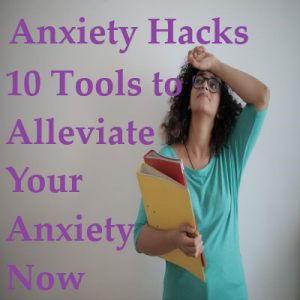
Then, if your brain is spending more energy on another thought or location in your brain as opposed to anxiety and/or the limbic system, you will be able to focus your attention on a thought or stimuli that induces a feeling other than anxiety. For example, if you have anxiety while giving a public speech, and you think of everyone in their underwear suddenly your brain is focused on a silly thought that brings you happiness in place of the anxiety you were feeling.
Below you can find a list of tools to refocus your brain’s energy away from anxiety, just in case imagining others in their underwear doesn’t do the trick for you.
10 Hacks For Anxiety
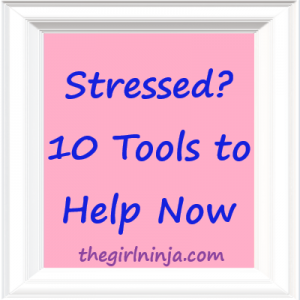
Tool 1: Music
Music can create a multitude of emotions. It is important when trying to alleviate anxiety that we select music that will elicit feelings of joy or peace. So, before turning on your favorite genre, think about how you feel when listening to specific channels or songs. Obviously we all have our preferred genres, but as you think about your experiences listening to music, focus on the emotion you had while listening to different genres. If you know one genre is correlated with feelings of frustration and anger maybe don’t choose that genre to alleviate anxiety.
Try to think of songs that you correlate with a feeling of calmness or peacefulness or songs that you listen to when you are relaxing. Songs that trigger emotions of peace can help trigger anxiolytic responses in our brain, alleviating our anxiety.
Tool 2: Laugh
(like the trick of thinking about everyone in their underwear)
Laughter is a wonderful mood setter. If you know of someone who always makes you laugh now is the time to call them. The internet is also full of hilarious videos, so if you know of a video that always makes you laugh you can also take a couple minutes to indulge in that video. Or if you don’t have anything off the top of your head, give one of the videos below a try. They always do the trick for me.
Tool 3: Fresh Air
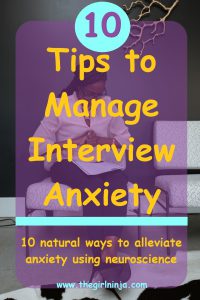
When feeling anxious, sometimes deep breathing of fresh air outside helps calm you. So, if you are somewhere where you can step outside for a moment, go ahead and take a few deep breaths while counting backwards from 5. Focus on only your breaths and the numbers as you count.
This act of focusing on your breathing and simple task of counting backwards can help individuals refocus their energy, and return to an emotionally balanced state of being. Or in other terms helps an individual to let go of their anxiety. So remember to breath in through your nose and out through your mouth deeply, taking your time to really focus on filling and expelling air from your lungs.
Tool 4: Physical Exertion
For physical exertion you will need to know yourself best. You might need a brisk 5 minute power walk or you might need a 20 minute session of Just Dance. Choose what works best for you.
You can also maximize your brain’s focus on something other than anxiety or the stimulus that caused your anxiety with multiple activities. For example, turn on some music while you move your body to stimulate your auditory and physical cell processing systems.
Here are some examples of what you can do to get your body moving: walk, yoga, stretch, jog, karate, or dance.
Tool 5: Self Assurance
(Tell yourself or write to yourself that there is no reason to have anxiety, everything is ok)
Sometimes anxiety is misplaced and logically we know everything is ok, but our body feels the need to elicit an anxiety response. In these situations triggering auditory neural processing with signals that everything is ok can sometimes override the anxiety response. Same with writing down and reading what you wrote silently. The mechanical action of writing calming words and reading calming words silently can also send neural signals that can override an anxiety response.
So, if you are able to take a moment to reassure yourself.
Tool 6: Put it into Perspective
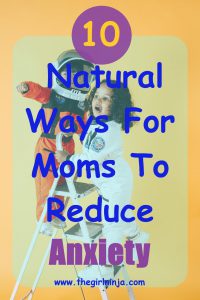
Oftentimes we get caught up in a moment and our hyperfocus in the moment overwhelms us. If you can take a step back to look at the bigger picture you will often find a new perspective that makes the cause of anxiety seem much less threatening. As a result, once your brain starts to process your new perspective the anxiety response is stifled.
I particularly like the option of putting things into perspective. I find this option easy for me to implement, specifically because I’m a worrier and always thinking about what could happen, you know worse case scenarios. Since I’m so good at thinking like that it’s easy for me to think of someone out there that has it worse than me. If you can think of a situation worse than yours, then you can focus on what you have to be grateful for.
The focus on what you are grateful for will trigger neural processing that can stifle your anxiety response.
Tool 7:Talk It Out
Talking about your anxiety can help for different reasons. When talking to someone else about your anxiety the other individual can often help you walk through it, putting your anxiety into perspective for you. The other individual can also assure you of your safety and even that you’ve GOT THIS. Sometimes just hearing it from someone else is what we need.
Another way talking it out can help, is by talking about how you have anxiety in the moment and you want to let it go. Then ask if the other individual can help you talk about anything else that is positive or funny or calming, to distract your brain’s focus on anxiety, and redirect your energy.
Tool 8: Comfort Food and/or Drink or Aromatherapy
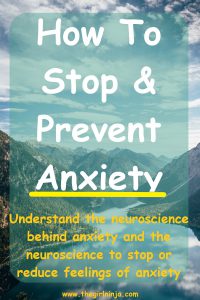
Our sense of smell (which makes up 70% of our taste; hence the connection to food and drink) is processed in a part of our brain called the olfactory bulb. The olfactory bulb is directly connected to our limbic system, and is highly influenced through experiences. In other terms smells are highly connected to our memories, and therefore connected to the emotions that are triggered by the memories the smell is connected to.
Comfort food is not some made up phenomenon, the smell of food that is connected with calm or happy memories can induce those exact feelings when the smell is experienced. So any food that is connected to calm or happy memories can act as an anxiolytic, relieving anxiety. Since, smells are so closely connected to memories, the smells and comfort foods that help each person varies greatly between individuals.
Some smells are recorded to act as an anxiolytic even without previous exposure to the smells to create memories. In particular, mint, lavender, or jasmine are scents collectively known to act as anxiolytics. So a nice cup of scented caffeine free tea (cinnamon tea helps calm me) or an aromatherapy session can help alleviate anxiety.
A side note here, sugar and caffeine can heighten our sensitivity to anxiety. This means that if you consume caffeine regularly or more than the daily recommended amount of sugar, that you can be more prone to anxiety. Regulating your consumption or decreasing your consumption of caffeine and/or sugar can help us reduce overall anxiety in our lives. So be sure to take your diet into account.
If you are interested in reading more about how scents can act as anxiolytics you can follow the link below to an in depth research article.
https://www.ncbi.nlm.nih.gov/pmc/articles/PMC3612440/
Tool 9: Mundane Chores/Tasks
Performing physical movement as described above in physical activity can alleviate anxiety, and chores or tasks give you physical movement with a very specific purpose. The combined activity in our brain of physical activity with a focus on the purpose helps redirect our brain’s energy alleviating anxiety and focus on the task at hand.
So if you have some laundry to do or dishes to scrub or a messy closet, take all your energy and direct it at your chore that needs to get done.
Tool 10: Physical Touch
Nothing can replace the reassurance and comfort a hug or holding someone’s hand can create. Physical touch in the form of comfort like hugs is correlated with the increase of a chemical in our brain called oxytocin. Oxytocin decreases our blood pressure actively mitigating a physical anxiety response. The decrease in blood pressure correlates moments that stimulate oxytocin release in our brain with feelings of calmness and comfort. So, if you are in a bind with anxiety try hugging it out.
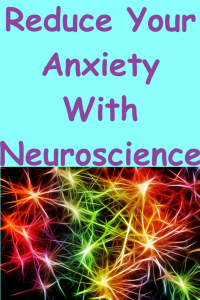
If you are interested in learning more about how physical touch has anxiolytic properties please find a research article to reference below.
https://www.sciencedirect.com/science/article/abs/pii/S0301051104001632?via%3Dihub
All of this is a lot to remember, so instead of focusing on all the information out there focus on one tool that you can try next time you want to alleviate your anxiety. Write the tool down, and try it for a week or two. As you start to understand whether or not that one tool is working for you or not make the tool a regular habit in your life or try another tool for a week or two. Remember this is a process of understanding yourself better. Be willing to ask the hard questions and commit to the changes that will help you be your best self.
